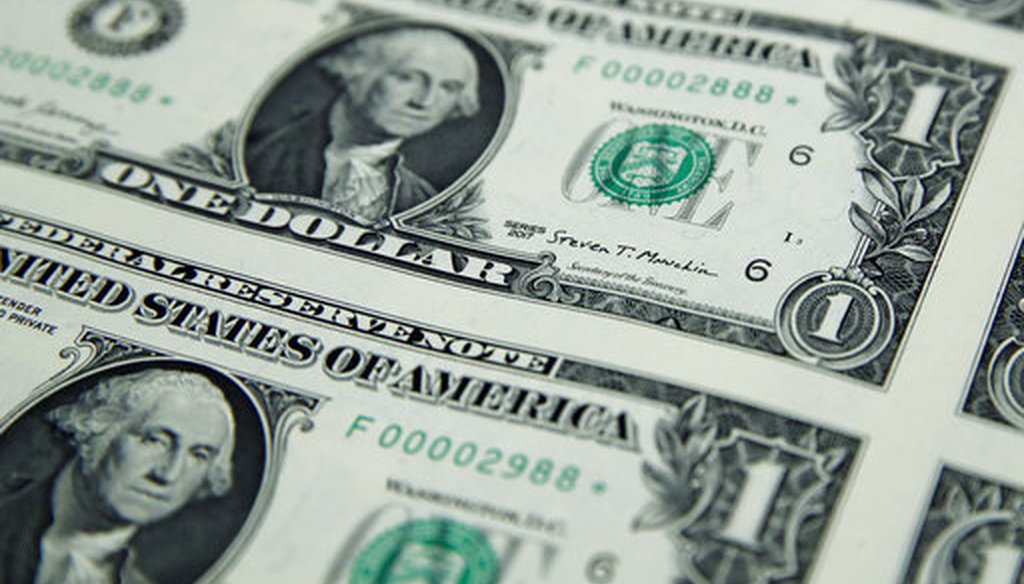Stand up for the facts!
Our only agenda is to publish the truth so you can be an informed participant in democracy.
We need your help.
I would like to contribute

(AP/Jacquelyn Martin)
As the midterm election campaign approaches its climax, the federal deficit has pushed its way back into the political discussion.
New government numbers show the deficit is on the rise.
The nonpartisan Congressional Budget Office reported that the preliminary federal budget deficit was $782 billion in fiscal year 2018 — $116 billion more than the shortfall in fiscal year 2017.
What happened?
Democrats blamed the Republican-backed tax bill that passed in December 2017, citing CBO’s earlier finding that the law would increase the deficit by almost $1.9 trillion over 10 years.
Republicans pointed to a broader issue of growth in programs such as Social Security and Medicare. "It’s a bipartisan problem — unwillingness to address the real drivers of the debt by doing anything to adjust those programs to the demographics of America in the future," Senate Majority Leader Mitch McConnell, R-Ky., told Bloomberg.
As it happens, both sides are talking past each other.
"Never in our history has so much been promised for the future — promises on both sides for high spending growth and low taxes that cannot possibly be sustained," said Eugene Steuerle, a fellow at the Urban Institute. The two parties "compete in proclaiming what they will give us, but they never tell our kids how many of the bills are being passed onto them."
Let’s take a closer look at federal spending, tax revenues, the deficit and the debt.
Our Sources
Congressional Budget Office, "Monthly Budget Review for September 2018," Oct. 5, 2018
Congressional Budget Office, "How the 2017 Tax Act Affected CBO’s Economic and Budget Projections," April 13, 2018
Congressional Budget Office, data from "The Budget and Economic Outlook: 2018 to 2028," April 9, 2018
Office of Management and Budget, "Table 1.1—Summary of Receipts, Outlays, and Surpluses or Deficits (-): 1789–2023," accessed Oct. 18, 2018
Office of Management and Budget, "Table 1.2—Summary of Receipts, Outlays, and Surpluses or Deficits (-) as Percentages of GDP: 1930–2023," accessed Oct. 24, 2018
Office of Management and Budget, "Table 7.1—Federal Debt at the End of Year: 1940–2023," accessed Oct. 24, 2018
Office of Management and Budget, "Table 8.7—Outlays for Discretionary Programs: 1962–2023," accessed Oct. 24, 2018
Office of Management and Budget, "Table 8.5—Outlays for Mandatory and Related Programs: 1962–2023," accessed Oct. 24, 2018
Federal Reserve Bank of St. Louis, "Total Public Debt as Percent of Gross Domestic Product," accessed Oct. 24, 2018
Committee for a Responsible Federal Budget, "Treasury: 2018 Deficit was $779 Billion," Oct. 15, 2018
Committee for a Responsible Federal Budget, "The 75-Year Budget Outlook," Oct. 25, 2018
Urban Institute calculations of data from the Survey of Consumer Finances, 2016
Bloomberg, "McConnell Blames Entitlements, Not GOP, for Rising Deficits," Oct. 16, 2018
Email interview with Eugene Steuerle, fellow at the Urban Institute, Oct. 24, 2018










































